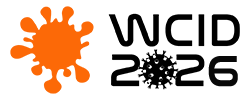Title : Emergencies at the clinic of infectious diseases
Abstract:
1. Shock.
2. Acute respiratory failure.
3. Coma.
4. Swelling-swelling of the brain.
5. Acute hepatic insufficiency.
6. Acute renal failure.
Shock is an acutely developing general reflex pathological reaction of the body in response to the action of extreme stimuli with inhibition of all body functions.
TYPES OF SHOCK IN THE CLINIC OF INFECTIOUS DISEASES
• Infectious-toxic.
• Dehydration.
•Anaphylactic.
PATHOGENETIC TYPES OF SHOCK
• Circulatory - an increase in the volume of the circulatory bed with stored circulating blood volume.
• Hypovolemic - a decrease in the volume of circulating blood with the preserved volume of the circulatory bed.
INFECTIOUS-TOXIC SHOCK (TSS)
An emergency condition that occurs under the influence of a living pathogen and its biologically active substances, which is expressed by a complex of pathological changes in the activity of all physiological systems due to excessive or inadequate compensatory reactions and a violation of vital functions of the body, which are based on heavy disorders of microcirculation, metabolism and tissue hypoxia.
DAMAGING FACTORS OF TSH
• Endotoxins (lipopolysaccharides of the bacterial cell wall).
• Inflammatory mediators:
- tumor necrosis factor;
- interleukin 8;
- prostaglandins;
– catecholamines.
FEATURES OF ITSH FROM THE PATHOGEN
• Gram-negative shock (70% of cases) - activation of the sympathoadrenal system - hypercatecholaminemia (mild agitation, intoxication, spasm of small vessels, cyanotic skin, cold).
• Gram-positive shock (30% of cases) – early stage – warm dry skin, hypotension (warm shock).
ITSH CLINIC
• Early phase of shock - severe intoxication (shock index - Allgover index - 0.9-1.0), decrease in diuresis (less than 25 ml / hour, 0.35 ml / kgper hour for an adult).
• Phase of severe shock (heart rate - 120-140 per minute, blood pressure < 90 mm Hg, SHI > 1.5, BH > 30, oliguria: diuresis - less than 15 ml / hour).
• Late phase of shock - patients in a coma, cold, total cyanosis, hypothermia, a symptom of a "white spot" (more than 2 seconds), blood pressure < 50 mm Hg, shortness of breath, respiratory arrhythmia
LABORATORY CRITERIA FOR SHOCK SEVERITY
• Leukocytosis > 10,000 / μl.
• Thrombocytopenia < 100,000/μl.
• Fibrinogen < 1.5 g/l.
• Decompensated acidosis.
DIAGNOSIS CRITERIA
• The presence of fever and toxicosis at the onset of the disease.
• Tachycardia exceeds the level of fever, in the future occurs normalization of body temperature.
• Lowering blood pressure.
• The appearance of acrocyanosis, oliguria.
• Change in cardiac output, minute volume of the heart, CLA.
• Development of DIC syndrome.
• Leukocytosis or leukopenia and p / i shift more than 10%.
• Decreased oxygen volume, high lactate levels, pronounced metabolic acido
DIAGNOSIS CRITERIA
• The presence of fever and toxicosis at the onset of the disease.
• Tachycardia exceeds the level of fever, in the future occurs normalization of body temperature.
• Lowering blood pressure.
• The appearance of acrocyanosis, oliguria.
• Change in cardiac output, minute volume of the heart, CLA.
• Development of DIC syndrome.
• Leukocytosis or leukopenia and p / i shift more than 10%.
• Decreased oxygen volume, high lactate levels, pronounced metabolic acido



